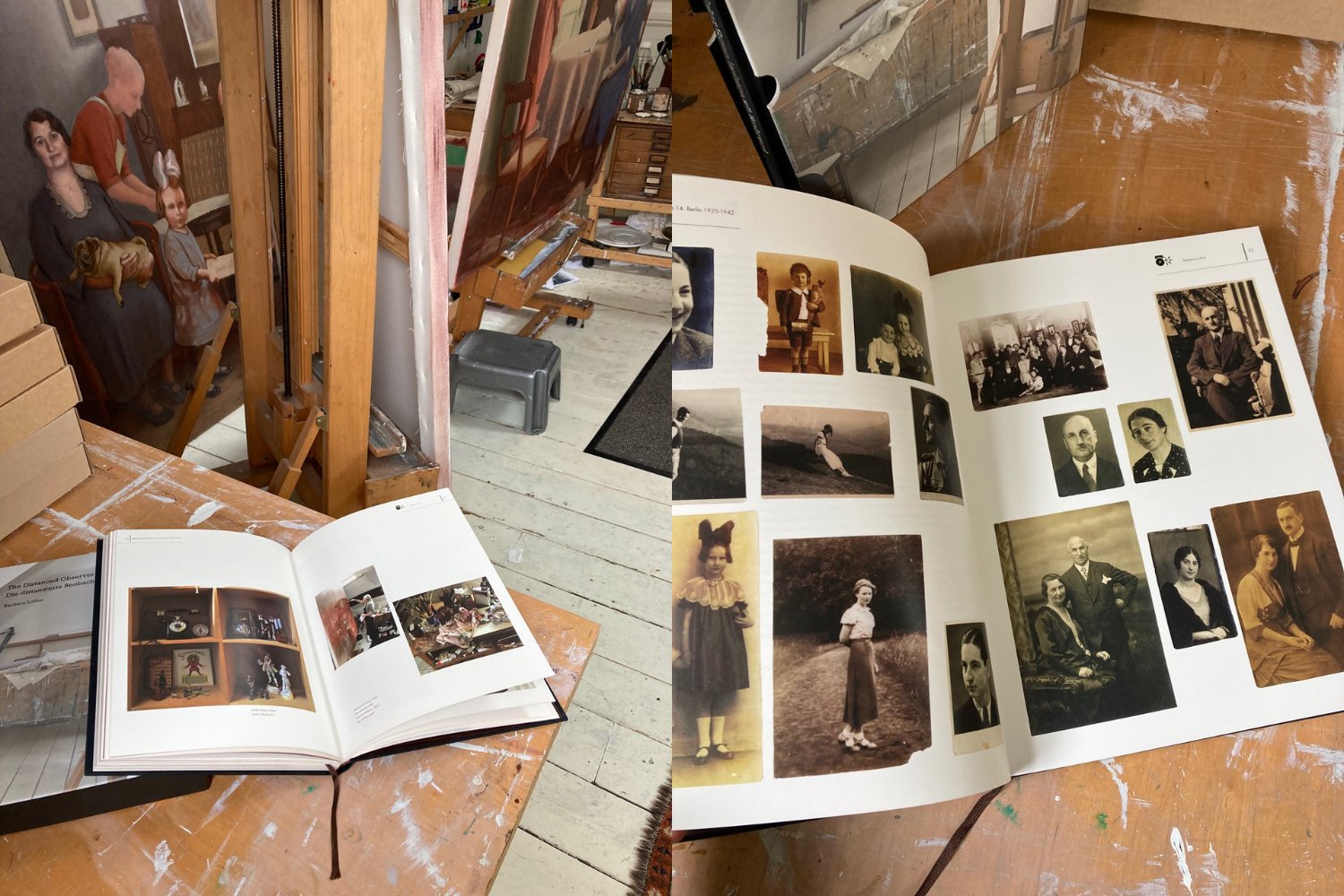Matthew Reisz introduces Barbara Loftus's beautiful, two-volume collection of artwork, stories and more, which launched earlier this month
It was only in 1994 that Hildegard Basch began to speak openly about her experiences of growing up Jewish in pre-war Berlin. This initially led her daughter, the artist Barbara Loftus, to produce a series of haunting works depicting the episode in November 1938 when two SA paramilitaries turned up at the Basch apartment with a tea chest, into which they placed the family porcelain, and confiscated most of the cutlery, leaving an empty cabinet in the dining room.
Illustrating this scene provided the impetus for a much wider investigation of “the imagined house of my mother’s early years”, as Loftus writes in her book The Distanced Observer/Die Distanzierte Beobachterin. She continued to excavate this lost world for over 25 years in a wide variety of media, including film, photographic reconstructions and silhouettes, and especially in her powerful oil paintings.
Basch's parents and brother were all killed by the Nazis after she secured a visa to come to England, but Loftus resurrects their everyday lives: her grandmother playing bridge or adjusting her hat in the mirror; her mother hiding under the table with her dolls to escape her parents’ arguments about money; a maid cleaning out an ornate stove. We also see hints of the catastrophe ahead: tense family meetings; visa application forms spread out on the table; the grandfather and uncle trying to lie low by avoiding the apartment during daylight hours. These pictures draw on a few surviving family photographs, contemporary images of costumes, artefacts the artist has collected, confiscation documents, letters from the 1930s returned to Basch after an aunt died in 1995 and occasional discreet references to the history of art. Just as in many photograph albums, the figures have an extraordinary poignancy, both vividly present and slipping out of reach.
The Distanced Observer is published in a bilingual, two-volume limited edition by Scrutineer Publishing and was officially launched at Maggs Bros antiquarian bookshop in London this month. Many of Loftus’s paintings are now held in Berlin's Stadtmuseum, but the book brings them together in a kind of archive, with background documentation, quotes from experts, images of her studio and essays by art historians on her techniques. The first volume focuses on the Basch's apartment at Keithstrasse in Berlin and even includes detailed cutaway illustrations by an architectural artist showing its location and layout within the building.
Equally poignant is the second volume subtitled German Landscape with Wandervogel: Speculations on Wandering and Exile. Basch was a great enthusiast for the back-to-nature youth movement, which attracted people from many different backgrounds until it was banned by the Nazis (and replaced by the Hitler Youth) in 1933. Loftus’s paintings capture the innocent intensity and idealism, though in retrospect they are tinged with sadness and even horror. Basch had a romance with a gentile boy that had to be broken off at the time of the Nuremberg racial laws and her mother saw to it that her pregnancy was terminated. Grunewald station, from which hikers once set off on carefree excursions, was later used to deport 50,000 German Jews to Auschwitz.
The Basches were just one family, but Loftus’s “paintings against forgetting” form a marvellous tribute both to them as individuals and to their whole milieu. They well deserve their own monument in these beautifully produced books.
By Matthew Reisz
Photos by Rachael Adams
The Distanced Observer/Die Distanzierte Beobachterin (Scrutineer Publishing, 2022) is out now. barbaraloftus.co.uk




